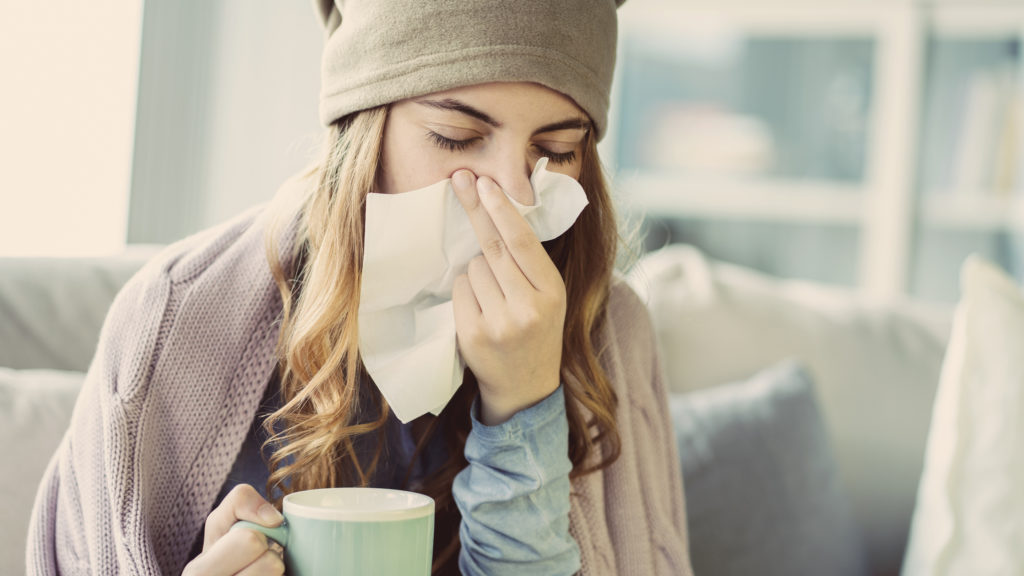The World Health Organization officially declared COVID-19 a pandemic on March 11, 2020. COVID-19, short for “coronavirus disease 2019,” has left millions of people with thousands of questions. Some of the most common questions are about whether COVID-19 is like the flu.
Here’s the bottom line: No, COVID-19 is not “just like” the flu. Below, we’ll discuss the many reasons why the COVID-19 pandemic is different from the flu, and you’ll find answers to some of the most common questions about coronavirus vs. the flu.

First, do COVID-19 and the flu have anything in common?
Before we get into important differences between COVID-19 and the flu, here are a few things they do have in common:
- COVID-19 and the flu are both caused by viruses, so antibiotics won’t help: Antibiotics only treat bacterial infections. COVID-19 is caused by a specific, novel (new) type of coronavirus called severe acute respiratory syndrome coronavirus 2 (SARS-CoV-2). The flu is caused by different strains (or types) of the influenza virus. The viruses that cause COVID-19 or the flu are not the same.
- Both viruses are transmitted from one person to another via droplets: If someone with either of these viruses sneezes, coughs, speaks, or talks, droplets carrying the virus end up in the air or fall down to lower surfaces. When these droplets land in another person’s mouth, nose, or eyes — or when a person touches a surface that has droplets and then touches their own mouth, nose, or eyes — the virus can enter the other person’s body.
- Handwashing is an effective way to slow the spread of both viruses: Washing your hands with soap and water for at least 20 seconds is the best way to kill the viruses on your hands — and it kills other germs that hand sanitizers don’t. If you don’t have soap and water, hand sanitizers with 60% to 80% alcohol are a good second option. Keeping your hands clean helps you make sure you aren’t transferring the viruses from one place to another.
- People over age 60, people with chronic health problems, and people with weaker immune systems have a higher risk of dying from both viruses: COVID-19 and the flu are especially dangerous for older or sicker people. But this doesn’t mean that younger people are risk-free. Some flu strains affect young, healthy people more severely. And recent reports on COVID-19 are showing that many younger people between 20 and 54 years old are being hospitalized from the disease.
Although COVID-19 and the flu have these four things in common, there are important differences. Let’s answer some frequently asked questions about them.
Are flu symptoms and coronavirus symptoms the same?

The flu and COVID-19 are both respiratory infectious diseases. This means they affect the parts of your body that help you breathe, like your lungs.
Many respiratory diseases, including the flu and COVID-19, share common symptoms. For example, both illnesses share two main symptoms: fever and a dry cough.
Here’s one big difference: Trouble breathing (shortness of breath) is common with COVID-19, but it’s less common with the flu.
Other COVID-19 symptoms include:
- Runny nose
- Sore throat
- Body aches
- Fatigue
- Diarrhea
More severe COVID-19 symptoms that require immediate medical help include:
- Difficulty breathing
- Persistent chest pain or pressure
- Confusion
- Bluish lips or face
COVID-19 symptoms can show up anywhere from 2 to 14 days after you’re exposed to the virus. The CDC reports that people are most contagious when they’re sickest, but it’s possible that the virus can be passed when people don’t have symptoms yet.
Other flu symptoms besides fever and a dry cough include:
- Body aches
- Chills
- Fatigue
- Runny nose
- Sore throat
- Headache
- Diarrhea
Flu symptoms can show up 1 to 4 days after being exposed to the flu virus. You could pass the virus to someone as early as 1 to 2 days before you ever have symptoms and 5 to 7 days after getting sick.
Does the flu vaccine prevent the coronavirus disease?
Since COVID-19 is caused by a coronavirus, not by the influenza virus, a flu vaccine will not prevent COVID-19. Flu vaccines work by triggering your immune system to make cells that will specifically fight the flu virus if you’re ever exposed to it.
It’s still a good idea to get a flu vaccine though, because you can get very sick from the flu, too.
Can flu medications treat COVID-19?
Antiviral medications like oseltamivir (Tamiflu) are used to treat the flu. Oseltamivir is also being tested to see whether it may be a good treatment for COVID-19, either alone or taken together with other medications, like HIV medications. In Thailand, patients with COVID-19 who took oseltamivir and certain HIV medications noticeably improved 48 hours after treatment. However, more research is needed to determine if these medications can be used to treat COVID-19.
Scientists are currently testing many drugs and drug combinations to find out which treatments work best for COVID-19.


